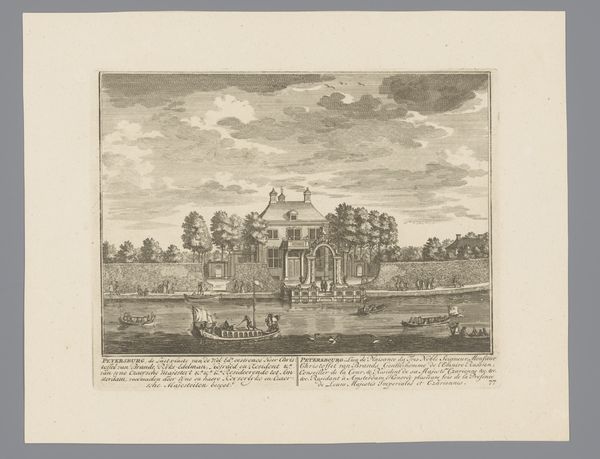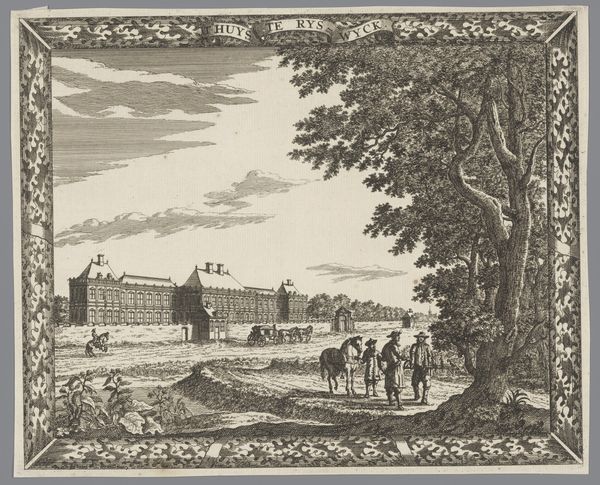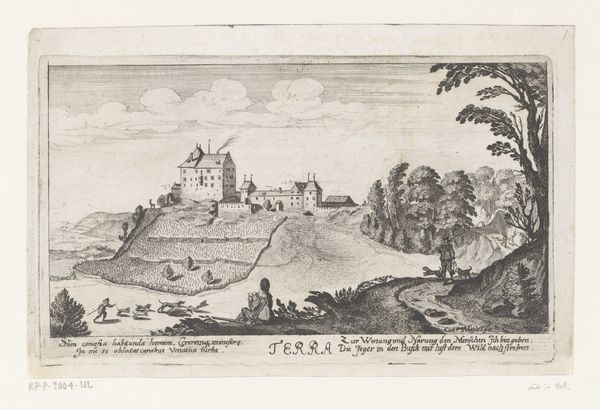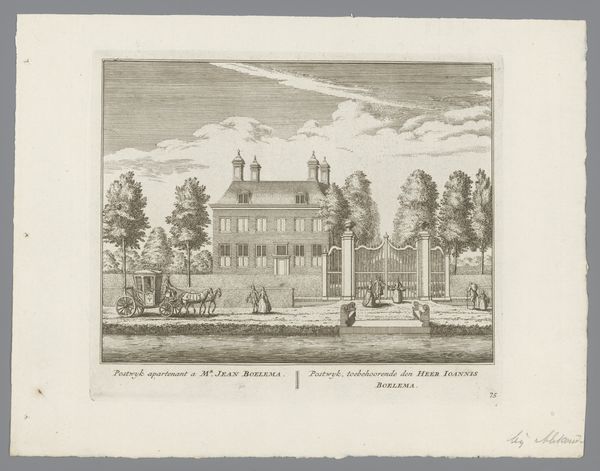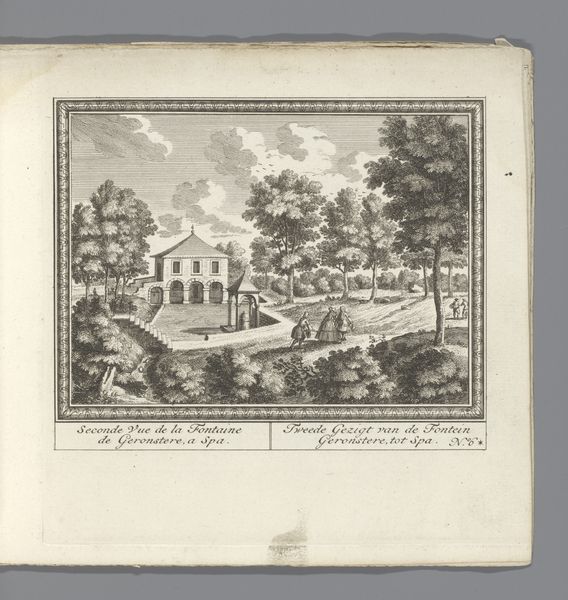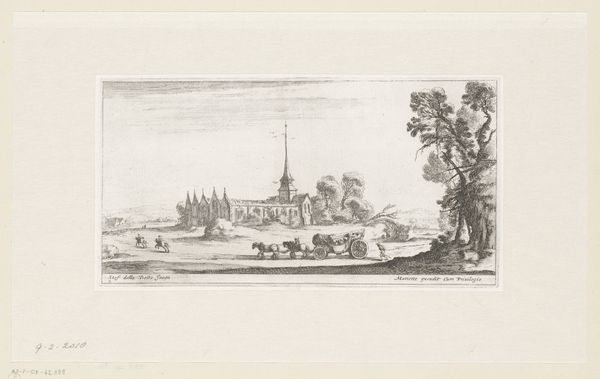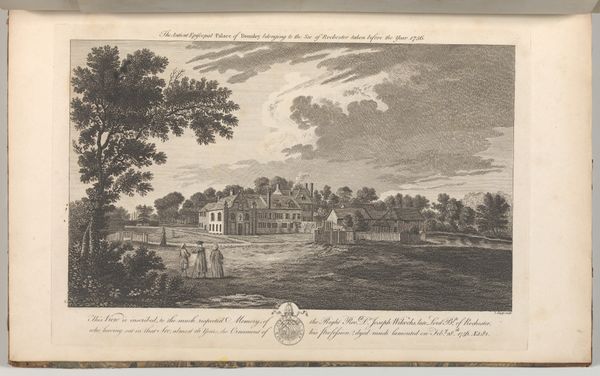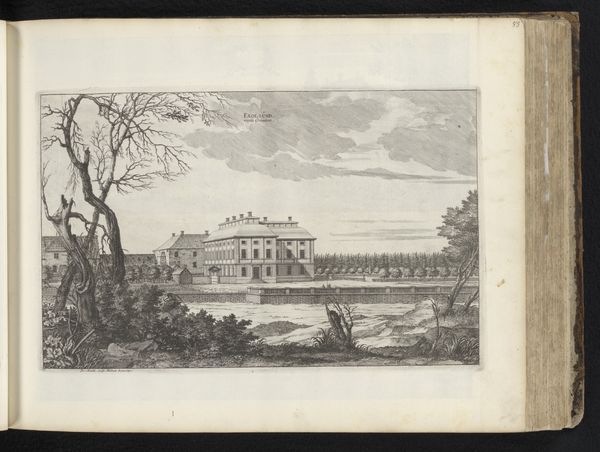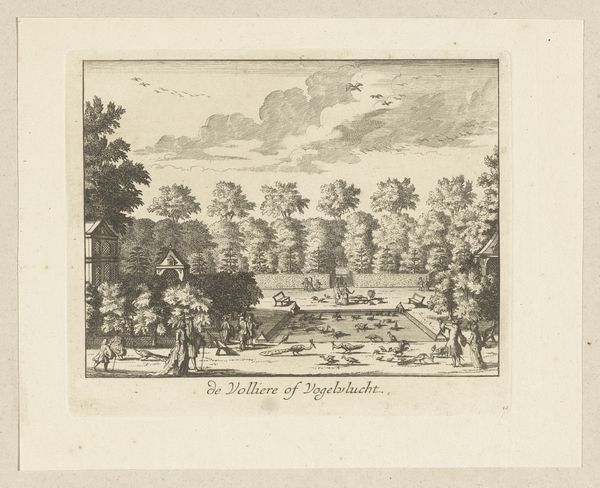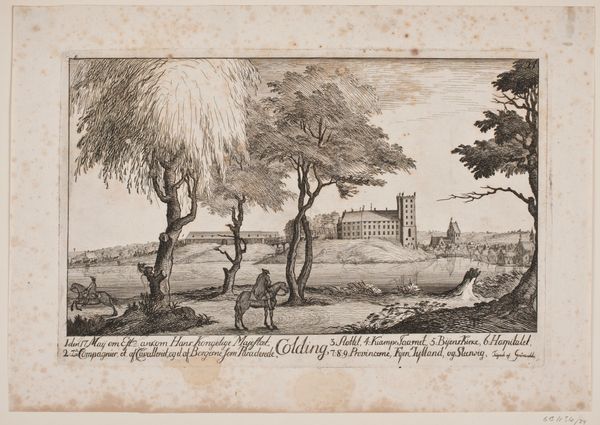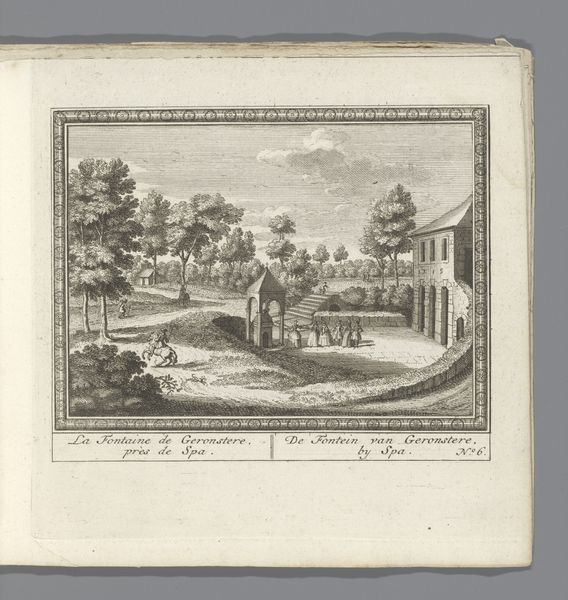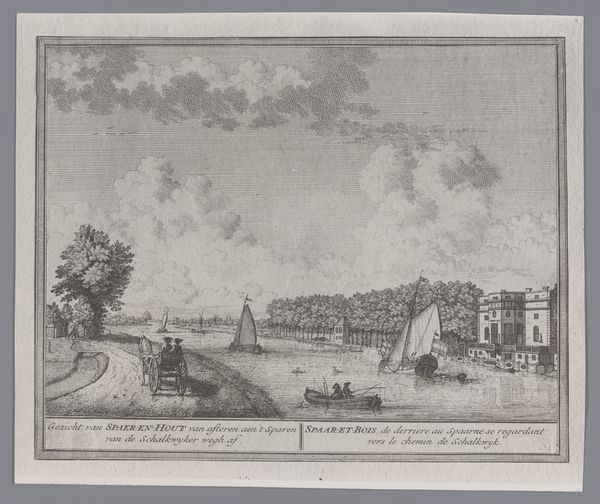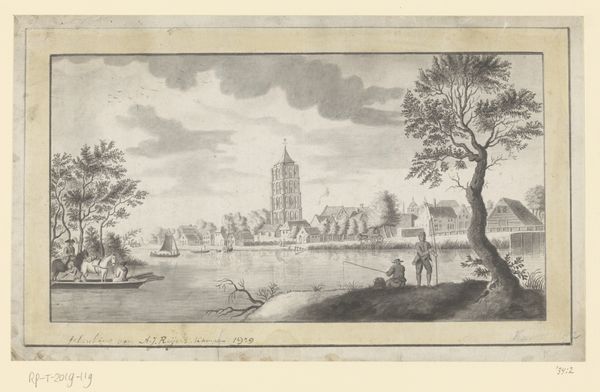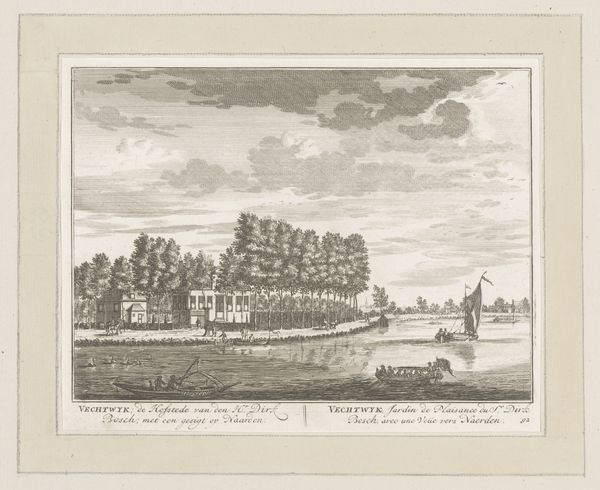
Kerk van de Heilige Antonius in de tuinen van het Palacio del Buen Retiro te Madrid 1694 - 1737
0:00
0:00
pietervandenberge
Rijksmuseum
drawing, watercolor, engraving
#
drawing
#
water colours
#
baroque
#
landscape
#
watercolor
#
coloured pencil
#
cityscape
#
engraving
Dimensions: height 168 mm, width 252 mm
Copyright: Rijks Museum: Open Domain
Curator: Before us is a work attributed to Pieter van den Berge, dating from 1694 to 1737. It's an engraving with watercolor, depicting the Kerk van de Heilige Antonius, within the gardens of the Palacio del Buen Retiro in Madrid. Editor: The color palette is fascinating—muted greens, soft blues, very dreamlike, and somehow calming. The entire composition has this detached, almost staged feel to it, as if the scene were set for royalty alone. Curator: Indeed. This artwork allows us to examine the political dynamics of 17th-century Spain. The church, built by the Portuguese, was a site of royal amusement, revealing the complex relationships between power, national identity, and leisure within the court. Who had access, who did not. Editor: Notice how the artist employs linear perspective to guide our eye toward the central building, the church. Also note how the meticulous engraving outlines every leaf and brick—structurally this all points to the architectural precision prized during the baroque era. It imposes order on an otherwise sprawling landscape. Curator: That imposed order speaks volumes. The formal gardens, the placement of figures – are deliberate assertions of control and status. The figures themselves, rendered small against the backdrop of the palace and the landscape, reinforce this power dynamic, underscoring the limited agency of common people relative to the royal domain. It can tell you so much of the societal roles just through the art's design. Editor: True, the diminutive human presence sets the palace on an isolating stage, apart from and perhaps above everyday life. Considering semiotics, the river acting as both physical boundary and focal element within the landscape seems almost emblematic, symbolically isolating. Curator: This artwork is therefore a fascinating lens through which we can investigate court life and cross-cultural influence during that period, which brings us closer to its cultural context and its legacy. Editor: I agree. The rendering balances detailed observation and symbolic staging.
Comments
No comments
Be the first to comment and join the conversation on the ultimate creative platform.
